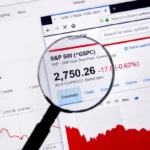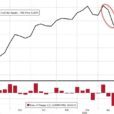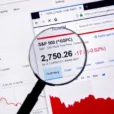
 Image Source: DepositPhotos Each year in retirement, we take a certain amount of funds from our IRAs and it becomes income. This is a bit different than when we were paying regular income taxes on our yearly income minus investments. I was curious about this as the big story today is rich people slugging away thousands and maybe millions into investments. The investments grow and are not taxable until withdrawal (unless there is another way to avoid taxes). These are smarter people than I who are doing these investment maneuvers. I can pick stocks and funds and watch them grow. That is the limit of my expertise.The big story is: In 2018, U.S. billionaires paid a lower effective tax rate than working-class Americans for the first time in the nation’s history.” Naked Capitalism has a Times/Common Dreams piece with economist Gabriel Zucman explaining how billionaires are avoiding taxes. It peaked my curiosity. I do believe this is true and maybe trump opened much of the door to this with his tax breaks to the upper 20% too.Even with a generous deduction for retired people over 65, we still have income which is open to income taxes. Of course, other reductions reduce the liability. However, each year a certain amount of our funds has to be withdrawn and become income. So how do the rich do it?About three years ago ProPublica ran this:
Image Source: DepositPhotos Each year in retirement, we take a certain amount of funds from our IRAs and it becomes income. This is a bit different than when we were paying regular income taxes on our yearly income minus investments. I was curious about this as the big story today is rich people slugging away thousands and maybe millions into investments. The investments grow and are not taxable until withdrawal (unless there is another way to avoid taxes). These are smarter people than I who are doing these investment maneuvers. I can pick stocks and funds and watch them grow. That is the limit of my expertise.The big story is: In 2018, U.S. billionaires paid a lower effective tax rate than working-class Americans for the first time in the nation’s history.” Naked Capitalism has a Times/Common Dreams piece with economist Gabriel Zucman explaining how billionaires are avoiding taxes. It peaked my curiosity. I do believe this is true and maybe trump opened much of the door to this with his tax breaks to the upper 20% too.Even with a generous deduction for retired people over 65, we still have income which is open to income taxes. Of course, other reductions reduce the liability. However, each year a certain amount of our funds has to be withdrawn and become income. So how do the rich do it?About three years ago ProPublica ran this:
“Lord of the Roths: How Tech Mogul Peter Thiel Turned a Retirement Account for the Middle Class Into a $5 Billion Tax-Free Piggy Bank,” ProPublica, Justin Elliott, Patricia Callahan and James Bandler.This could be another way the wealthy have and are lowering taxes. It is abbreviated from the original article and too long as it is.~~~~~~~~Over the last 20 years, Thiel has quietly turned his Roth IRA — a humdrum retirement vehicle intended to spur Americans to save for their golden years — into a gargantuan tax-exempt piggy bank, confidential Internal Revenue Service data shows. Using stock deals unavailable to most people, Thiel has taken a retirement account worth less than $2,000 in 1999 and spun it into a $5 billion windfall.To put that into perspective, here’s how much the average Roth was worth at the end of 2018: $39,108.And here’s how much $5 billion is: If every one of the 2.3 million people in Houston, Texas, were to deposit $2,000 into a bank today, those accounts still wouldn’t equal what Thiel has in his Roth IRA.What’s more, as long as Thiel waits to withdraw his money until April 2027, when he is six months shy of his 60th birthday, he will never have to pay a penny of tax on those billions.ProPublica has obtained a trove of IRS tax return data on thousands of the country’s wealthiest people, covering more than 15 years. This data provides, for the first time, an inside look at the financial lives of the richest Americans, those whose stratospheric fortunes put them among history’s wealthiest individuals.What this secret information reveals is that while most Americans are dutifully paying taxes — chipping in their part to fund the military, highways and safety-net programs — the country’s richest citizens are finding ways to sidestep the tax system.One of the most surprising of these techniques involves the Roth IRA, which limits most people to contributing just $6,000 each year.The Clinton administration didn’t want to give a fat tax break to wealthy people who were likely to save anyway, so it blocked Americans making more than $110,000 ($160,000 for a couple) per year from using them and capped annual contributions back then at $2,000.Yet, from the start, a small number of entrepreneurs, like Thiel, made an end run around the rules: Open a Roth with $2,000 or less. Get a sweetheart deal to buy a stake in a startup that has a good chance of one day exploding in value. Pay just fractions of a penny per share, a price low enough to buy huge numbers of shares. Watch as all the gains on the stock, no matter how giant — are safe from taxes forever, as long as the IRA remains untouched until age 59 and a half. Then they use the proceeds, still inside the Roth, to make other investments.About a decade after the creation of the Roth, Congress made it even easier to turn the accounts into mammoth tax shelters. It allowed everyone — including the very richest Americans — to take money they’d stowed in less favorable traditional retirement accounts and, after paying a one-time tax, shift them to a Roth where their money could grow unchecked by Uncle Sam — a Bermuda-style tax haven right here in the U.S.In 1999, $2,000 was the maximum amount you could put into a Roth in a year.In 1999, single taxpayers could contribute to a Roth if they made less than $110,000. Like many startups, PayPal offered its top executives low initial salaries and large stock grants. Thiel’s income that year was $73,263, the IRS records show.While SEC filings describing that time don’t mention Thiel’s Roth, they show that he bought his first slice of the company in January 1999. Thiel paid $0.001 per share — yes, just a tenth of a penny — for 1.7 million shares. At that price, he was able to buy a large stake for just $1,700.Some claim the purchase of stocks, startup shares at a discounted $0.001 price with a Roth would be indefensible. Apparently not in Thiels case. Later shares were sold to investors at market prices. For tax purposes, Thiels Roth was worth $1664 at the end of 1999.Thiel would never again contribute money to his Roth, tax records show.He didn’t need to. In just a year’s time, the value of his Roth jumped from $1,664 to $3.8 million — a 227,490% increase.In 2002, eBay purchased PayPal. That same year, Thiel sold the shares, still inside his Roth, his financial assistant later told New Zealand officials. The tax-free proceeds poured into his account. By the end of 2002, Thiel’s Roth was worth $28.5 million, tax records show. Thiel started to buy up other start up stocks for other companiesIn 2004, Thiel met Mark Zuckerberg who had come to Silicon Valley for the summer to work on growing a company . . . Facebook. Thiel invested $500,000, Facebook’s first large outside infusion of cash. Those Facebook shares ended in Thiel’s Roth IRA. That ensured Thiel wouldn’t owe taxes on his early investment in the company.At one point Thiel admitted the U.S. tax system has “fairness problems” in which “you have super rich people paying a lower rate than people in the middle or upper middle class.”His solution? Taxing the middle class and the upper middle class a lot less and cutting their dependence on expensive programs such as Medicare and Social Security.In the latter years of the George W. Bush administration, Congress took a wrecking ball to those defenses restricting investments to Roth accounts leaving a way for the wealthy stormed to abuse it.The change centered on an unsexy-sounding maneuver known as a Roth conversion. It works like this: If you have money in a traditional IRA, you can transform it into a Roth as long as you pay one-time income tax on the money. By converting the account to a Roth, no additional income taxes are ever due.Conversions were in existence since the Roth’s conception. However, conversions were unavailable to Americans making below $100,000 per year.In 2006, Bush and the Republican-were in control of Congress. They were seeking to slash taxes on capital gains. This being the type of income resulting from the selling of stocks or other assets. But they faced a problem. Budget rules required them to find a way to make up for the lost revenue.Their solution was widely viewed as a gimmick: using one tax cut to pay for another tax cut. A provision was included in the Bush bill that lifted the ban on the wealthy making Roth conversions. Since the maneuver requires a payment of tax up front, it counted in short-term congressional budget models as actually raising revenue. The tax breaks didn’t come until later. “It will have large and damaging effects on the federal budget for decades to come,” wrote budget expert Len Burman in the specialty publication Tax Notes.The new backdoor into the Roth opened in 2010 and set off a frenzy of conversions among hedge fund managers, industrialists and heirs, the tax records reviewed by ProPublica show.The ban on the wealthy making Roth conversions was lifted. They paid their taxes upfront. And never paid taxes on those funds again.So now we get to the nut of this very abbreviated iteration of the ProPublica article. Here are some of the things which occurred when Roth Accounts became wide-open.Wealthy maneuvering funds into Roth Accounts requires a payment of tax up front. It is counted in short-term congressional budget models as actually raising revenue. The tax breaks didn’t come until later. Later and similar to what Thiel had experienced. One that tax is paid. Roth account funding s no longer taxable. Budget expert Len Burman wrote (specialty publication Tax Notes). “It will have large and damaging effects on the federal budget for decades to come.”The new backdoor into the Roth opened in 2010 and set off a frenzy of conversions among hedge fund managers, industrialists and heirs as the tax records reviewed by ProPublica show.Weschler: the Berkshire Hathaway executive, amassed a giant traditional IRA in his years as a private equity partner and hedge fund manager. He converted a whopping $130 million.In his statement, Weschler said he opened a retirement account as a 22-year-old junior financial analyst in 1983 and began contributing the maximum amount allowed, along with a generous match from his employer. Weschler said his Roth is so large because he chose investments carefully, had “exceptional luck” and had nearly four decades for it to grow.He added that he paid more than $28 million in federal taxes to convert his account to a Roth.Warren Buffett: converted $11.6 million. After paying the one-time tax, both men saw their Roth accounts soar.Farhad Ebrahimi: Converted $19.4 million into a Roth, which would have triggered $6.8 million in income tax. But thanks to losses generated by other investments, he wiped out the tax bill on the conversion.Mitt Romney: On a disclosure form he listed an IRA worth between $20 million and $102 million. Romney had a traditional IRA. Bain Capital, executives there had effectively bypassed the contribution limits by putting extremely low-valued shares from private equity deals into their IRAs and then watching them balloon.And Thiel: His fortune was built not just with brains but also with massive tax breaks. By 2019, Thiel’s holdings had grown so vast and diverse his $5 billion was spread across 96 subaccounts inside his Roth. He showered millions of dollars on Republican politicians and groups with an anti-tax agenda, including Club for Growth Action.More By This Author:Why Isn’t The USA In A Recession ? Joe Biden’s Roll Out Of A New Student Loan Forgiveness Plan You Can’t Fool Mother Nature
















